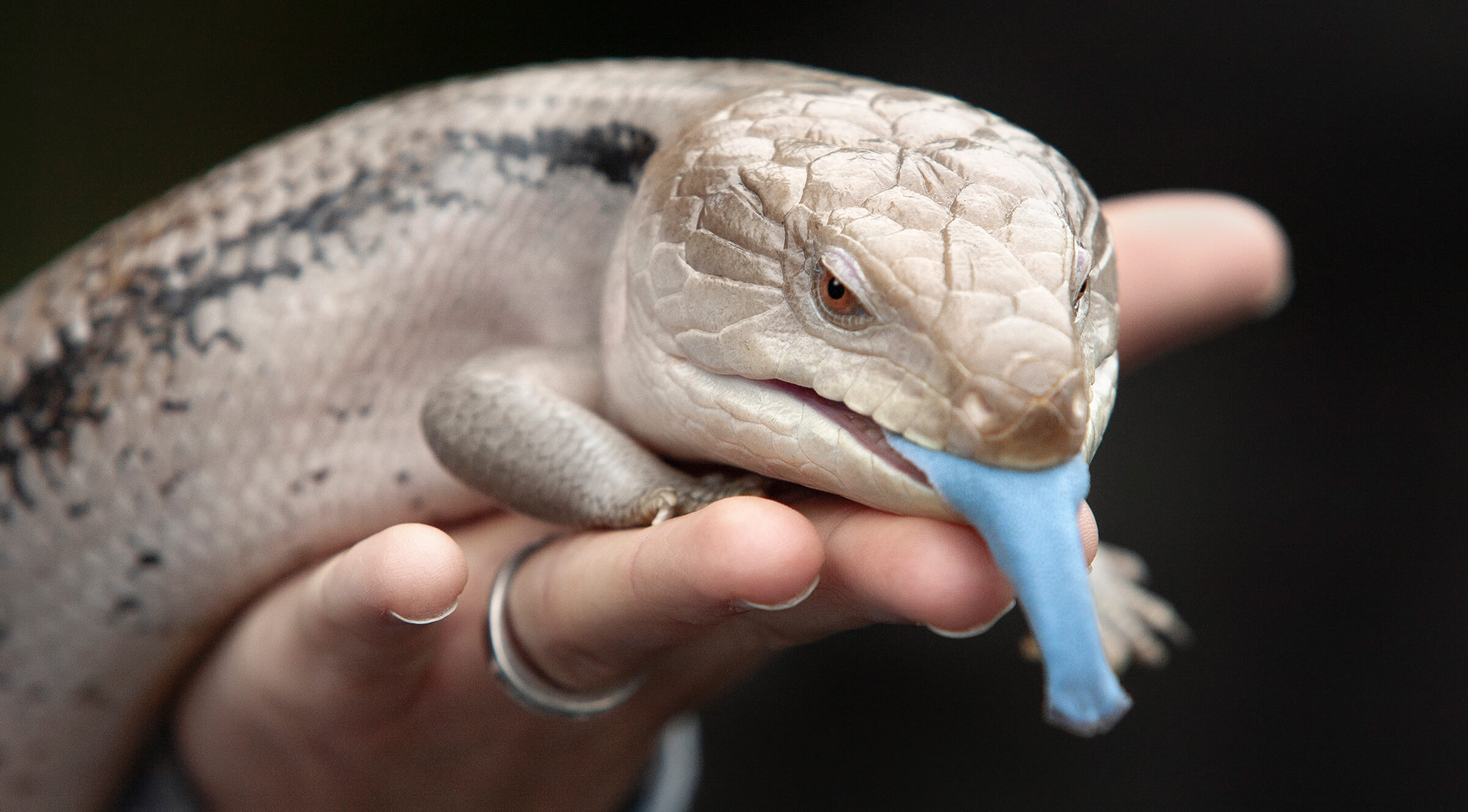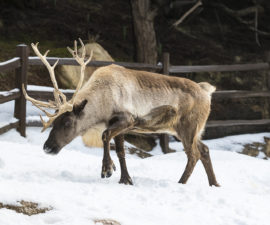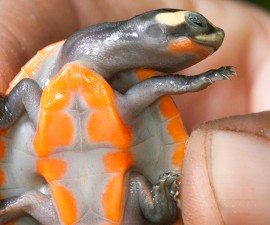BY Karyl Carmignani
Photography by Ken Bohn
As animals age, joints may stiffen, spine and muscles tighten, and mobility can become a painful ordeal. At the San Diego Zoo, animal care staff monitor their charges carefully and work closely with veterinarians to ensure each animal receives the best possible treatment plan. Ailing elderly animals may benefit from a range of treatments, including anti-inflammatory and pain medication, acupuncture, and laser therapy. Deena Brenner, DVM, senior veterinarian at the Zoo, is highly trained in another wellness method: physical therapy, based on the Wolfe Kinetic Technique. Through gentle massage and micro-movements of the joints, she connects with her patients in a way that feels good to them and decreases stiffness and discomfort.
“One of the things I appreciate most about this form of physical therapy is that it is ‘neuromuscular re-education,’ meaning that animals relearn normal movement patterns, which improves mobility and function, and decreases pain,” Dr. Brenner explained. “As veterinarians, we’re trained to have ‘smart hands,’ which we use to palpate our patients during a physical exam and to feel their internal organs. The tactile connection through physical therapy can help to promote wellness.” It’s clear that her varied patients benefit from this “hands-on” approach!
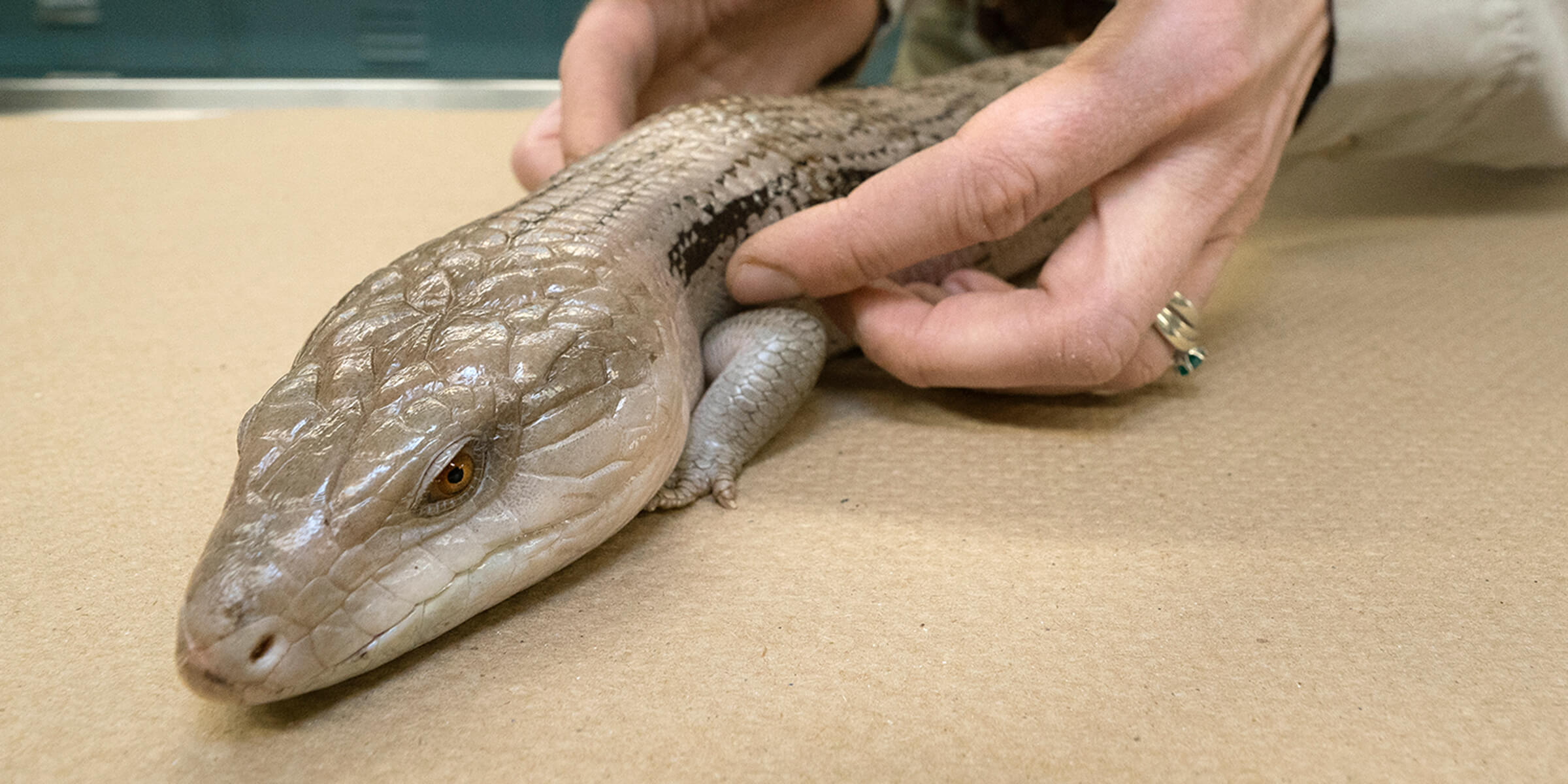
Skink in the Pink
Twenty-three-year-old Skink Floyd, a longtime education animal at the Zoo, is elderly by blue-tongued skink standards. A thick, cylinder-shaped, 18-inch-long body, with a tail tapering down the last several inches, is held off the ground an inch or so by four sturdy little legs. But last winter, keepers noticed a decrease in his activity and appetite, and he began rubbing his nose on things, a signal indicating discomfort. Radiographs (x-rays) showed arthritis in multiple joints.
He was retired from his education job. Intensive supportive care was administered: anti-inflammatories, assisted feeding, subcutaneous fluids, and physical therapy. He was transported to the Zoo hospital for some time with Dr. Brenner. She gently moved her fingers over him and could feel tightness around his joints, shoulders, spine, and digits. Physical therapy is part science, part intuitive art form, and Dr. Brenner’s care, competence, and compassion shines through with all of her patients.
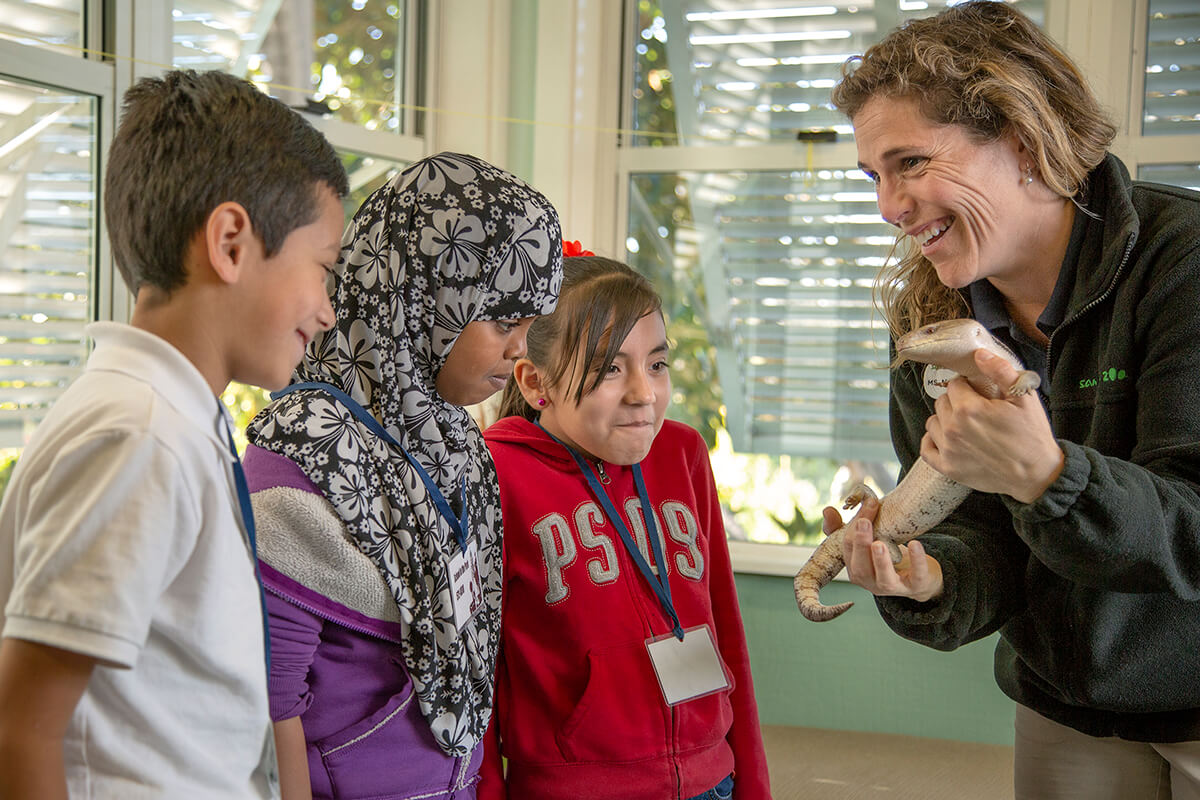
LIZARD APPRECIATION
Floyd has shared the coolness of reptiles to countless children!
During a session, she gently massages his spine, keenly aware of any flinching or twitching at any point along his body. She moves his ribs a tiny bit from side to side to relax him, working down toward his lumbar region. “Nothing should hurt. I’m not stretching or forcing anything,” she said. “I’m barely moving him, so he’ll feel what it’s like to move normally.” After a few moments of TLC, Floyd is clearly in his happy place. Dr. Brenner does some micro traction along his spine, her tiny movements creating space between the vertebrae. She takes each small foot in her hand and rotates the leg in its socket. “I enjoy this hands-on time with my patients,” she said. “It’s rewarding to see them relax into the technique.”
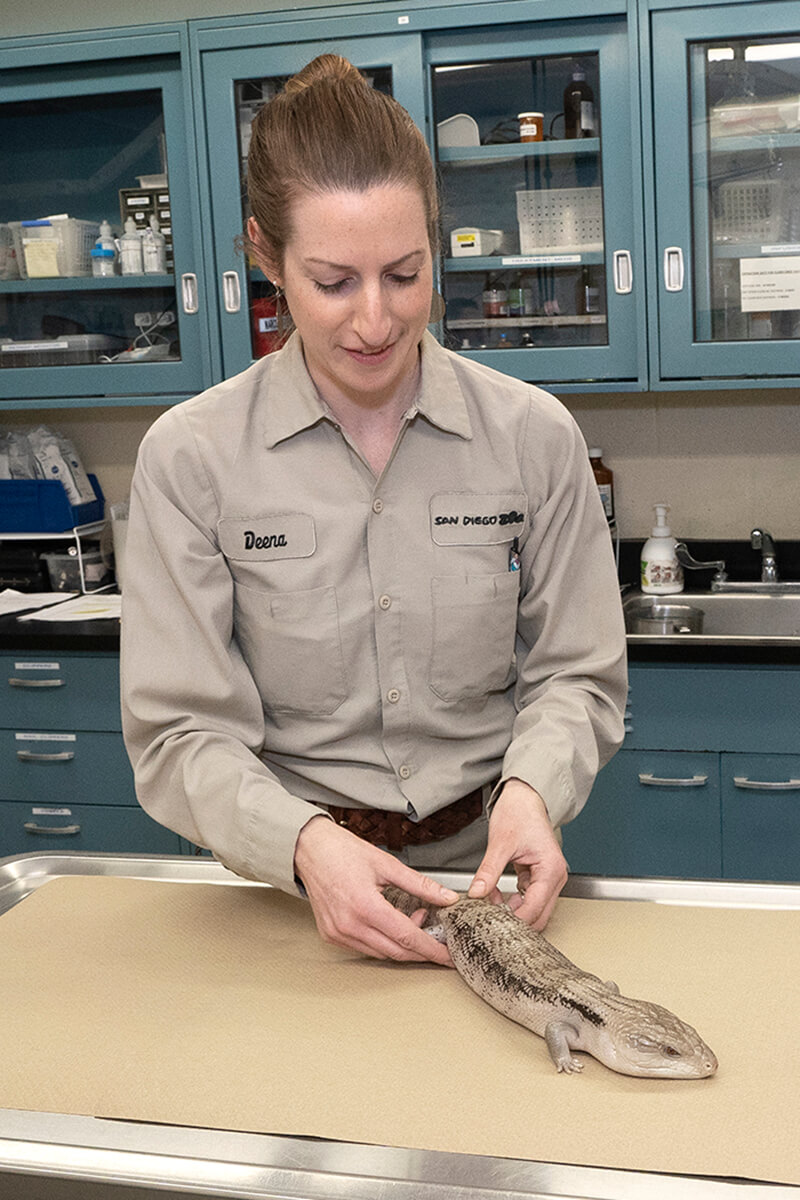
MAGIC TOUCH
Floyd relaxes into his treatment with Dr. Brenner. He seems to understand that it will make him feel better.
After three months of weekly physical therapy sessions, Floyd was so much improved, he was approved to go back to work with the education team. Dr. Brenner explained that it often takes an integrative medicine approach to help her patients thrive, and this therapy really has no side effects or downside. “As I have often seen in my patients at the Zoo, there is rapid and long-lasting improvement.” And that’s how an elderly skink got back in the pink!
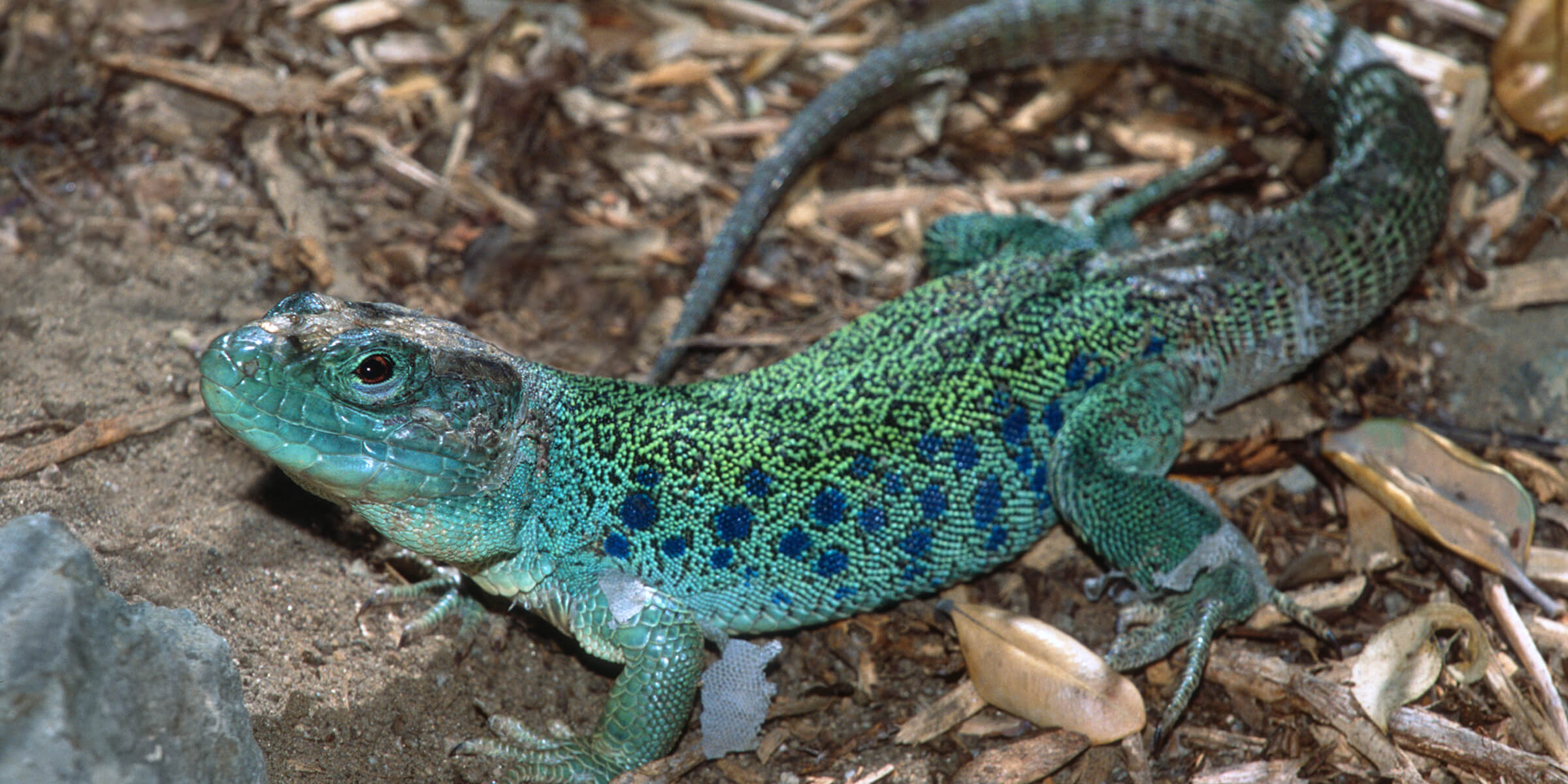
A Gem of a Patient
Next up was a gorgeous lizard called a jeweled lacerta (or ocellated lizard), with shimmering, colorful scales…and a limp. His injury was sudden, likely due to a scuffle with another lizard that shares his exhibit. Noting decreased use of his rear legs, his keepers took him to the hospital for a CT scan, which revealed no significant injuries. He was prescribed anti-inflammatories, laser therapy, and “bed” rest, but it didn’t help. Dr. Brenner met with him and “after his first few physical therapy sessions, his mobility increased when nothing else seemed to work,” said Rachelrose Schneider, reptile keeper.
This lizard is significantly smaller, younger, and faster than the skink, so after little cotton balls were secured over his eyes to calm him, a keeper held him in place so the doctor could work her magic.
Initially, the lizard’s mouth gaped open, indicating stress, but after a few minutes, he relaxed, and his mouth closed. Dr. Brenner worked high on his body first before reaching the high-tension area around his hips. His scales are small, so she could work the sides of his spine. “He’s really guarding this area,” she noted. She did “pelvic bicycling” using her thumb and forefinger to mobilize the pelvis, “giving him the suggestion of what I want him to do, to improve the range of motion in his rear legs.” His left hip, which he didn’t want to move at all the previous week, was greatly improved. However, a couple months later, the lizard suffered another mobility setback, so Dr. Brenner increased the frequency of his therapy to get him back on track.“We don’t have to fix it all today, I just want to get him moving in the right direction,” she said.
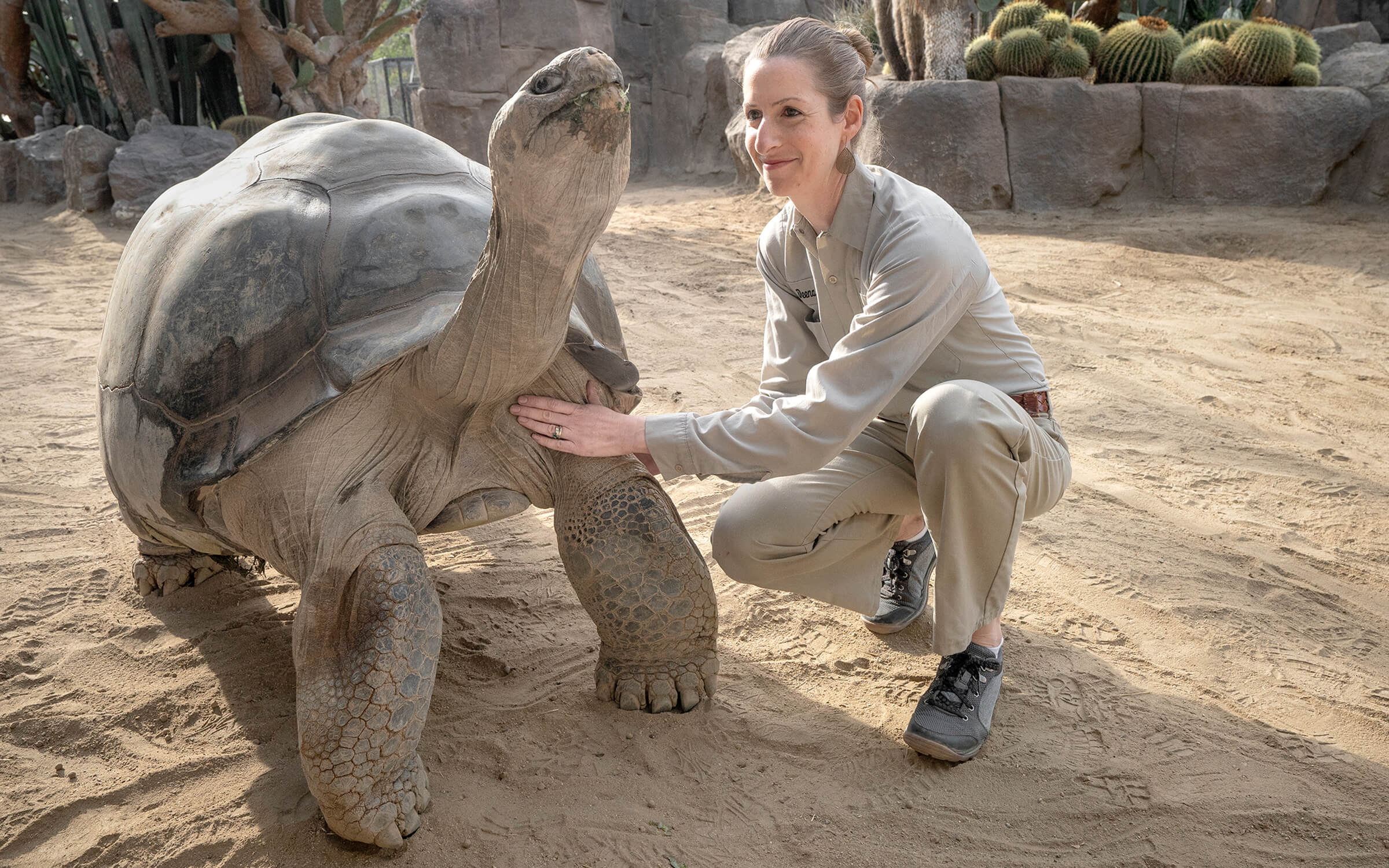
Heavy-duty Therapy
If you are over 100 years old and weigh 500 pounds, you’re bound to get a hitch in your giddy-up once in awhile. So it was with Wallace, a Galápagos tortoise residing at Reptile Walk. Last summer, keepers noticed the giant reptile was lingering at the back wall, and wouldn’t come down to eat. He was dragging his rear right foot, which put a great deal of stress on the other limbs and got his whole body out of alignment.
Dr. Brenner entered the picture, and while she and reptile keeper Davis Provan calmly scratched Wallace’s neck and front legs, the mighty tortoise stretched his neck and legs out from his shell, exhibiting the “finch response.” This behavior harkens back to his native Galápagos Island, where finches alight on the tortoises to groom and rid them of ectoparasites, and the tortoises lengthen to expose all the skin they can to their avian assistants.
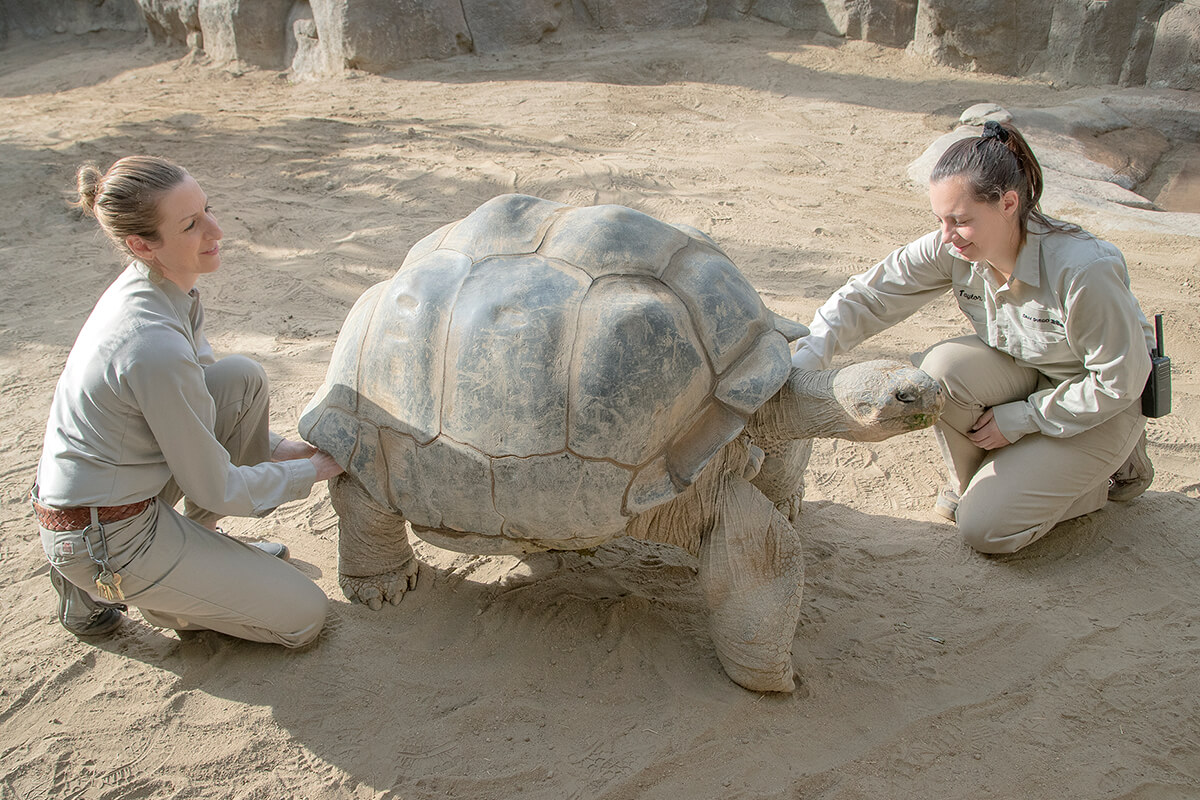
TORTOISE TEAMWORK
A reptile keeper helps monitor Wallace while Dr. Brenner massages his ailing limb.
Fully extended and stock-still, Wallace is a sight to behold, as Dr. Brenner patiently massages his papery neck skin. “He has to work his neck hard with everything he does,” she said, as he moved into her touch. She reaches under his shell to rub his shoulders, and a tiny sigh escapes through his nose. “He’s showing a really nice response to these gentle manipulations,” she noted. His ancient limbs get a workout, given his heft, so Dr. Brenner takes her time on each one.
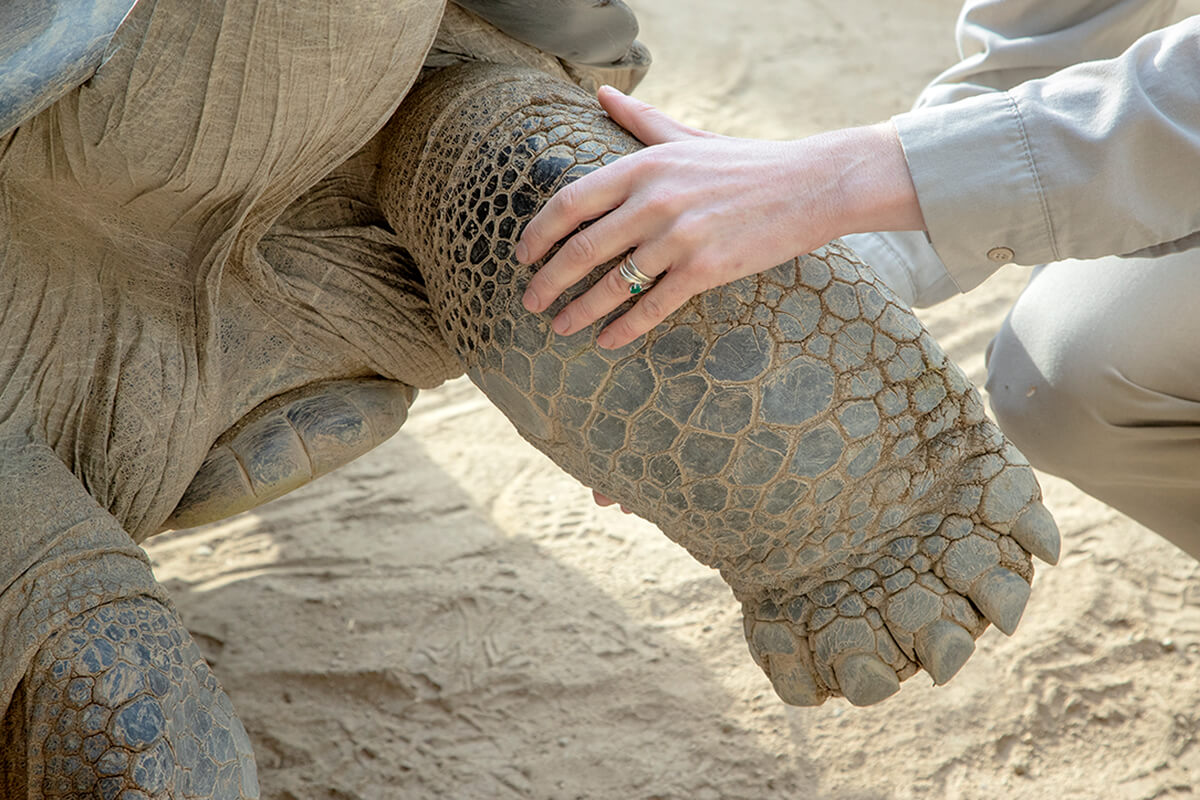
SKIN TO SKIN
Dr. Brenner takes her time gently manipulating each limb on the mighty tortoise. Wallace seems to appreciate this special time with her!
Davis watches the tortoise’s face closely as she makes her way to the sore leg. “When this first started, he was more vigilant and fidgety when she got to his rear legs,” he said. But now, Wallace stays relaxed throughout the session, accepting that this soothing handling will make him feel better. In less than two months of weekly treatments, Wallace has gone from creaking lethargy to energetically breeding two of the females! “It’s truly amazing that Wallace feels good enough and is fit enough to perform this important role for species conservation,” added Dr. Brenner.
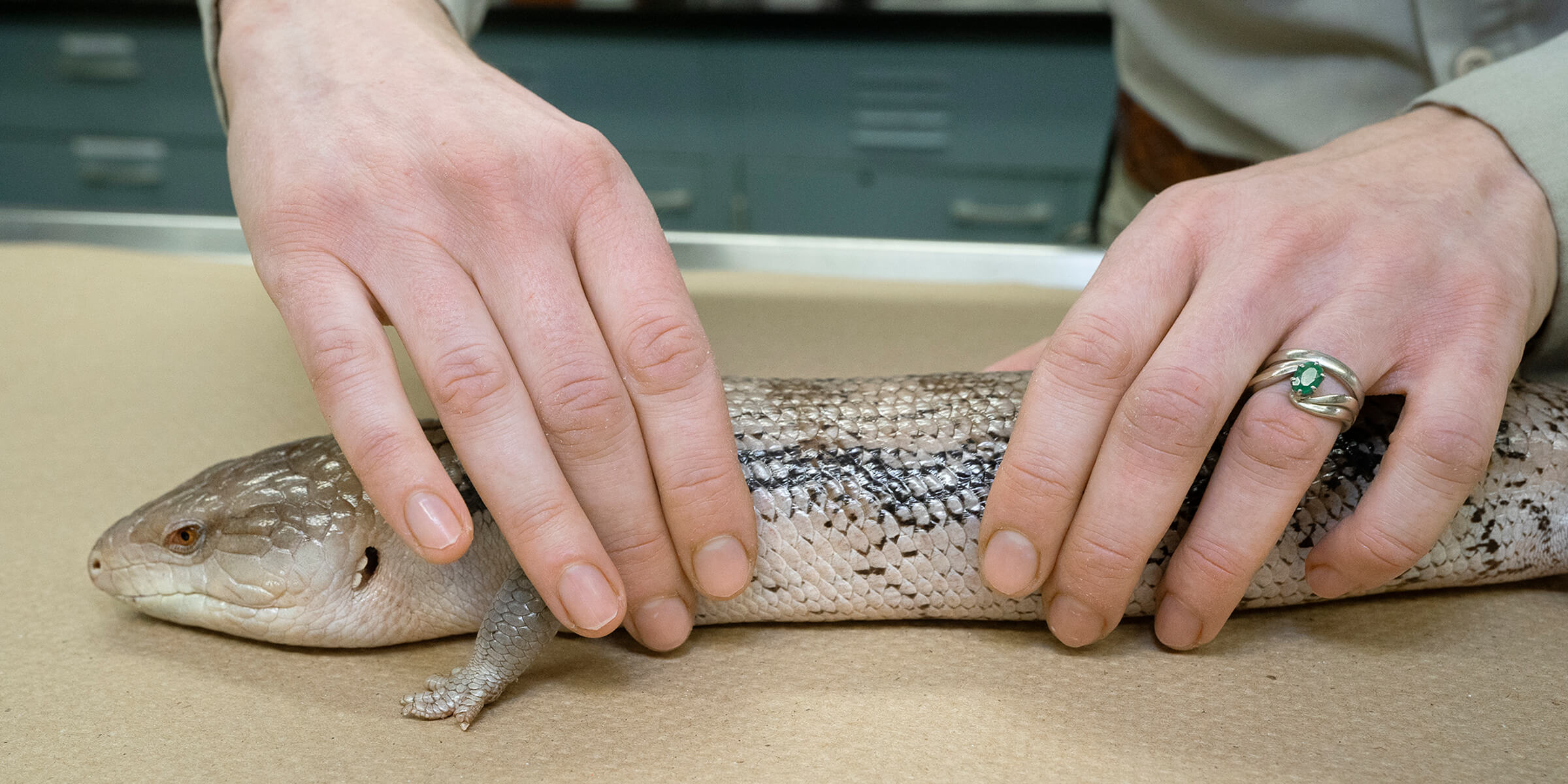
Let’s Get Physical
While this particular physical therapy may not be a panacea for all mobility problems, it can help a lot of different species. Dr. Brenner was first introduced to this technique at the Denver Zoo by Dr. Tammy Wolfe, who developed the Wolfe Kinetic Technique for canine rehabilitation. Dr. Brenner was later trained in this technique, which has proven effective with a wide range of species. “This technique translates across taxa,” said Dr. Brenner, “and it informs how I evaluate movement pattern in my patients.” It takes teamwork to provide the best care for the animals. “Our keepers’ observations and input contribute to the success of the therapy,” she added. Animals young and old can regain a spring in their step, thanks to smart hands and big hearts.

